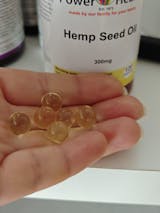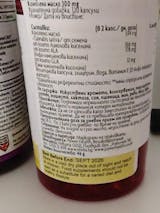- The Secret of the Zone Diet: Proper Nutrition and Which Supplements Work
- The Zone Diet: A Scientific Approach to Balanced Nutrition
- Biochemical Basis of the Zone Diet
- Structural Principles of Eating on the Zone Diet
- Practical Application of the Block Method
- Key Food Groups in the Zone Diet
- Optimal Protein Sources
- Selection of Carbohydrates with a Low Glycemic Index
- Dietary Supplements Complementary to the Zone Diet
- Essential Fatty Acids and Antioxidants
- Optimization of the Diet Zone according to Individual Needs
- Adaptation of the Zone Diet for Athletes and Active Individuals
- Frequently Asked Questions about the Zone Diet
- Practical Tips for Implementing the Zone Diet
- Conclusion: Integrating the Zone Diet into the Modern Lifestyle
The Zone Diet: A Scientific Approach to Balanced Nutrition
The Zone Diet is a scientifically proven method for optimizing hormonal balance through precise macronutrient distribution. Developed by Dr. Barry Sears, the Zone Diet differs from conventional diets in that it focuses on the proportional ratio of protein, carbohydrates, and fat, rather than just a calorie deficit.
The conceptual framework of the Zone Diet is built on the belief that the correct balance of macronutrients - 40% carbohydrates, 30% protein and 30% fat - optimizes metabolic processes and stabilizes insulin levels. This metabolic harmony creates a state called "The Zone" in which the body functions at peak efficiency.
Biochemical Basis of the Zone Diet
The Zone Diet is based on controlling hormone levels, specifically insulin and eicosanoids—potent, short-acting hormone-like compounds. Maintaining an optimal balance between pro- and anti-inflammatory eicosanoids is considered a key factor in reducing chronic inflammation and its associated diseases.
Omega-3 fatty acids play a critical role in the regulation of these biochemical processes. They serve as precursors to beneficial anti-inflammatory eicosanoids and thus contribute to achieving a metabolic "Zone."
Structural Principles of Eating on the Zone Diet
The Zone Diet methodology involves structuring meals into specific proportions using the concept of "blocks." Each block consists of a specific amount of protein (7 g), carbohydrates (9 g), and fat (3 g). Individual daily needs are calculated based on body weight, physical activity, and specific health goals.
Practical Application of the Block Method
Implementing the block method requires dividing your daily food intake into five roughly equal meals. Each meal should contain a balanced combination of proteins, carbohydrates, and fats in the correct ratio.
For example, a basic 3-block meal would contain:
- 21 g protein (equivalent to 90 g chicken breast)
- 27 g carbohydrates (approximately 1.5 cups of vegetables and half an apple)
- 9 g fat (about 9 almonds or 1 teaspoon olive oil)
Key Food Groups in the Zone Diet
Selecting the right food sources is fundamental to successfully implementing the Zone Diet. Low-glycemic carbohydrates, lean proteins, and healthy monounsaturated fats form the foundation of this regimen.
Optimal Protein Sources
Protein quality is paramount on the Zone Diet. Recommended sources include:
- Fish rich in omega-3 fatty acids (salmon, mackerel, sardines)
- Lean meat (chicken breast, turkey, low-fat beef)
- Plant proteins (tofu, tempeh, lentils)
- Eggs (mostly egg whites)
Seafood, especially oily fish, occupies a privileged position due to its high content of omega-3 fatty acids.
Selection of Carbohydrates with a Low Glycemic Index
The Zone Diet favors carbohydrates with a low glycemic index, which minimally raise blood sugar and maintain stable insulin levels:
| Category | Recommended foods | Foods to avoid |
|---|---|---|
| Vegetables | Spinach, broccoli, cabbage, asparagus, zucchini | Potatoes, carrots, corn |
| Fruits | Strawberries, blueberries, apples, pears | Bananas, mangoes, raisins |
| Cereals | Quinoa, oatmeal, barley | White rice, wheat products |
Dietary Supplements Complementary to the Zone Diet
Although the Zone Diet focuses primarily on whole food sources, certain supplements can optimize metabolic processes and help achieve the "Zone" state.
Essential Fatty Acids and Antioxidants
Omega-3 fatty acids are at the top of the list of supplements recommended for the Zone Diet. They are essential for the production of beneficial eicosanoids and the reduction of inflammation. Additional beneficial supplements include:
- Policosanol – helps control cholesterol
- Coenzyme Q10 – optimizes cellular energy
- Alpha-lipoic acid – a powerful antioxidant with multiple metabolic functions
- Curcumin – inhibits pro-inflammatory pathways
"Omega-3 fatty acids are not just a nutritional component, but a metabolic modulator with the capacity to transform cellular function and inflammatory processes. In the context of the Zone Diet, they act as molecular keys, unlocking the potential for optimal physiological function." - Dr. Barry Sears
Optimization of the Diet Zone according to Individual Needs
Personalization is a key aspect of the Zone Diet, distinguishing it from universal diets. Metabolic characteristics, physical activity level, and specific health challenges require an individual approach to implementation.
Adaptation of the Zone Diet for Athletes and Active Individuals
For athletes and those who engage in intense physical activity, a modified version of the Zone Diet—known as the "40-30-30"—may offer an optimal energy substrate. This variant involves a higher calorie intake while maintaining the essential macronutrient ratio.
During high-intensity training, the addition of moderate glycemic index carbohydrates in the time window immediately following physical activity can optimize glycogen recovery without significantly disrupting the metabolic "Zone."
Frequently Asked Questions about the Zone Diet
Practical Tips for Implementing the Zone Diet
Question: How do I structure my meals on the Zone Diet if I have limited time to prepare food?
Prep is key to successfully following the Zone Diet on a busy schedule. It's a good idea to set aside time on the weekend to plan and prep balanced meals in advance. Focus on protein sources that require more cooking time, and keep pre-chopped vegetables on hand for quick combinations.
Question: Can vegetarians or vegans successfully follow the Zone Diet?
The Zone diet can be adapted for vegetarian or vegan diets by including plant-based proteins such as lentils, quinoa, tempeh and tofu. The challenge is ensuring adequate levels of omega-3 fatty acids, which may require the inclusion of algae, flaxseed oil or specialized supplements containing EPA and DHA from plant sources.
Question: What are the potential challenges when starting the Zone Diet?
The initial period of adaptation to the Zone Diet may be accompanied by temporary symptoms such as fatigue, headaches, or altered digestive function as the body adjusts to the new metabolic regime. These symptoms usually subside within 7-14 days. Gradual transition and adequate hydration can mitigate the adaptation process.
Conclusion: Integrating the Zone Diet into the Modern Lifestyle
The Zone Diet offers a science-based approach to nutrition focused on hormonal balance and metabolic optimization. Through strategic distribution of macronutrients, this regimen can contribute to improving body composition, energy levels, and inflammatory status.
Critical elements for successful implementation include adhering to the 40-30-30 ratio, prioritizing low-glycemic carbohydrates, quality proteins, and healthy fats, as well as the potential inclusion of specific supplements, among which omega-3 fatty acids take center stage.
Personalization and gradual adaptation are fundamental to transforming the Zone Diet from a temporary eating regimen into a sustainable lifestyle offering long-term benefits for metabolic health.





















